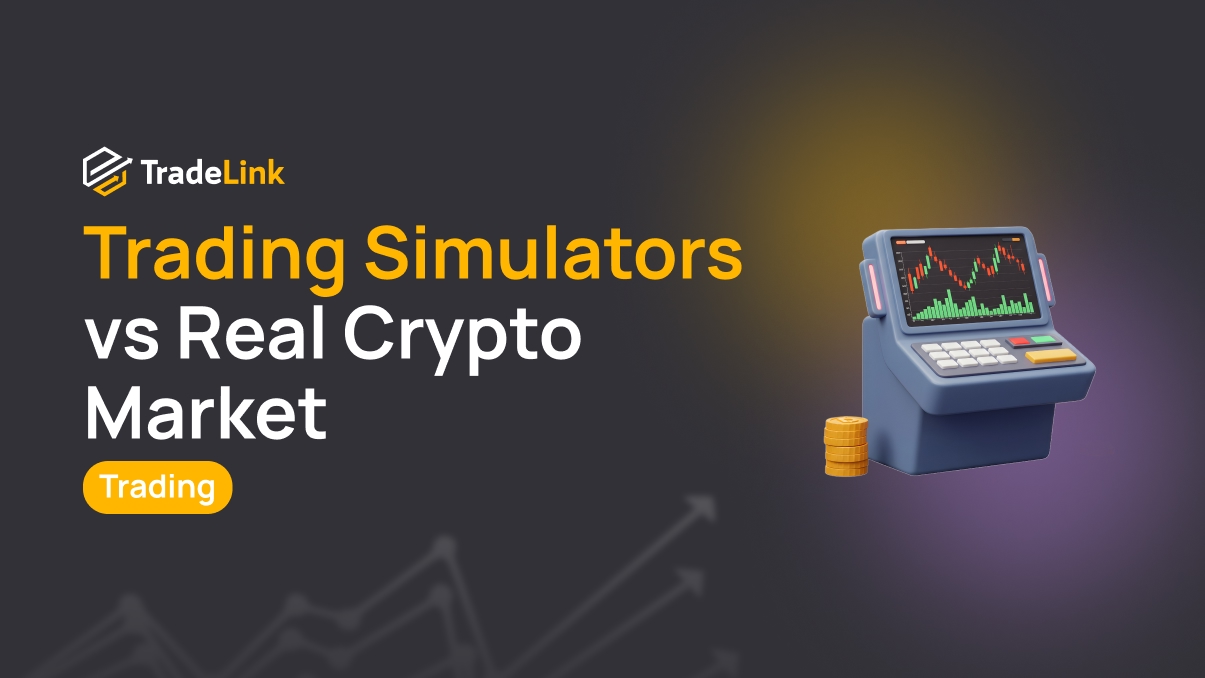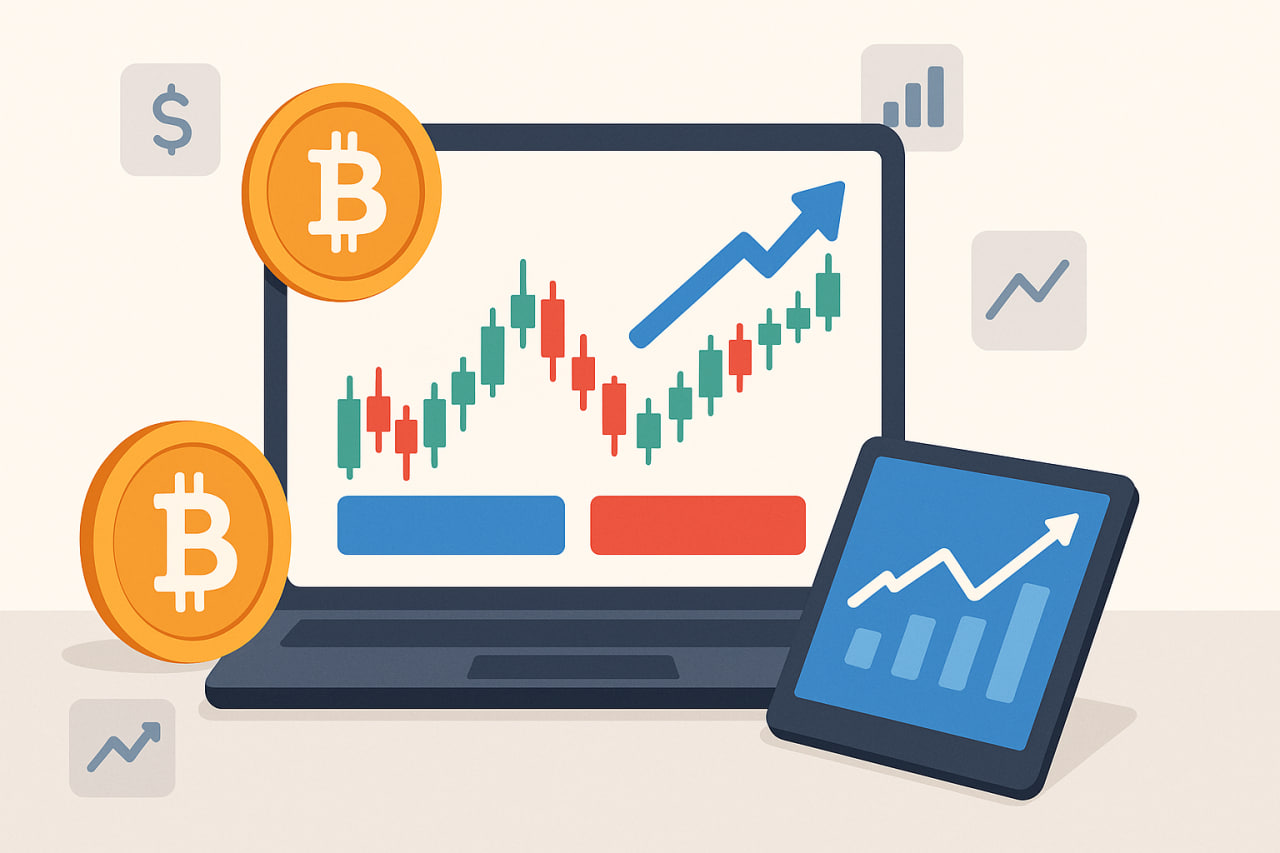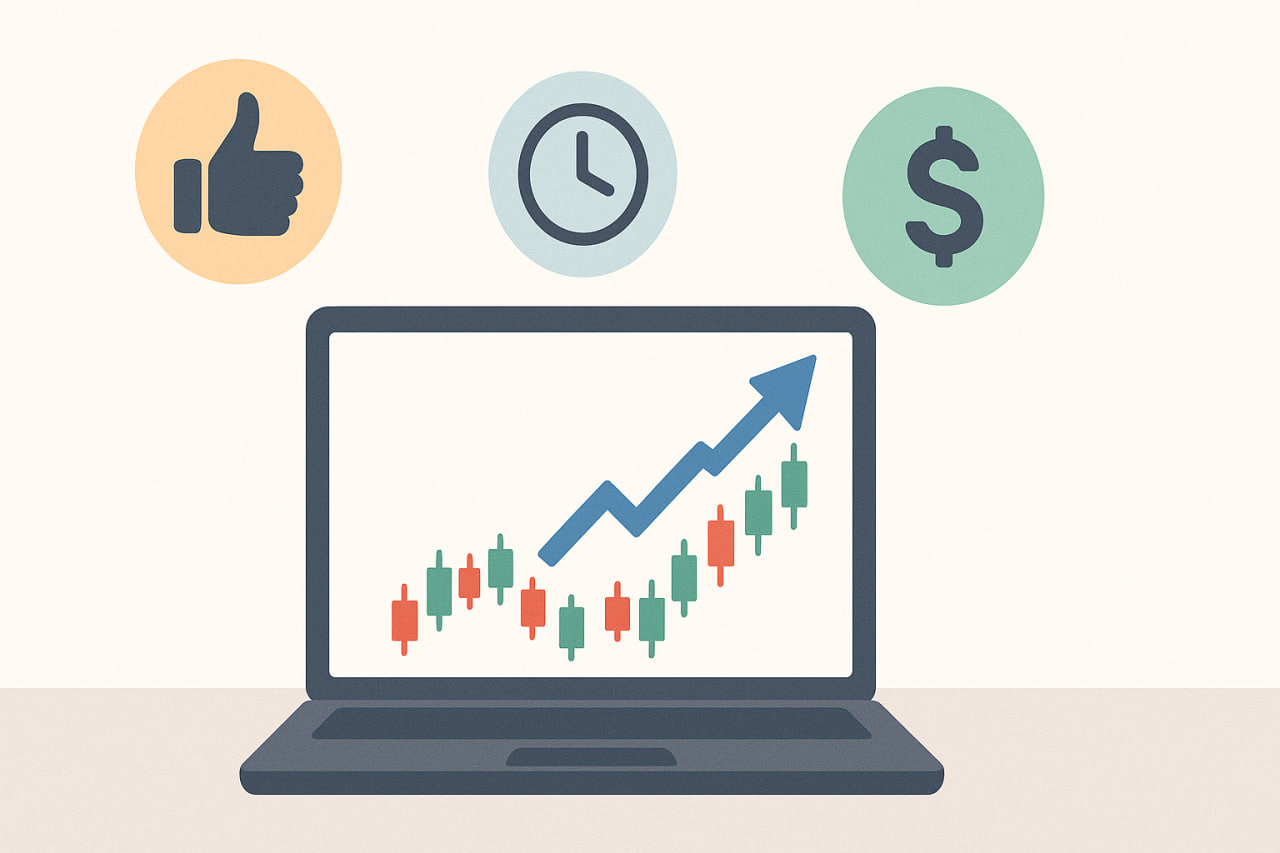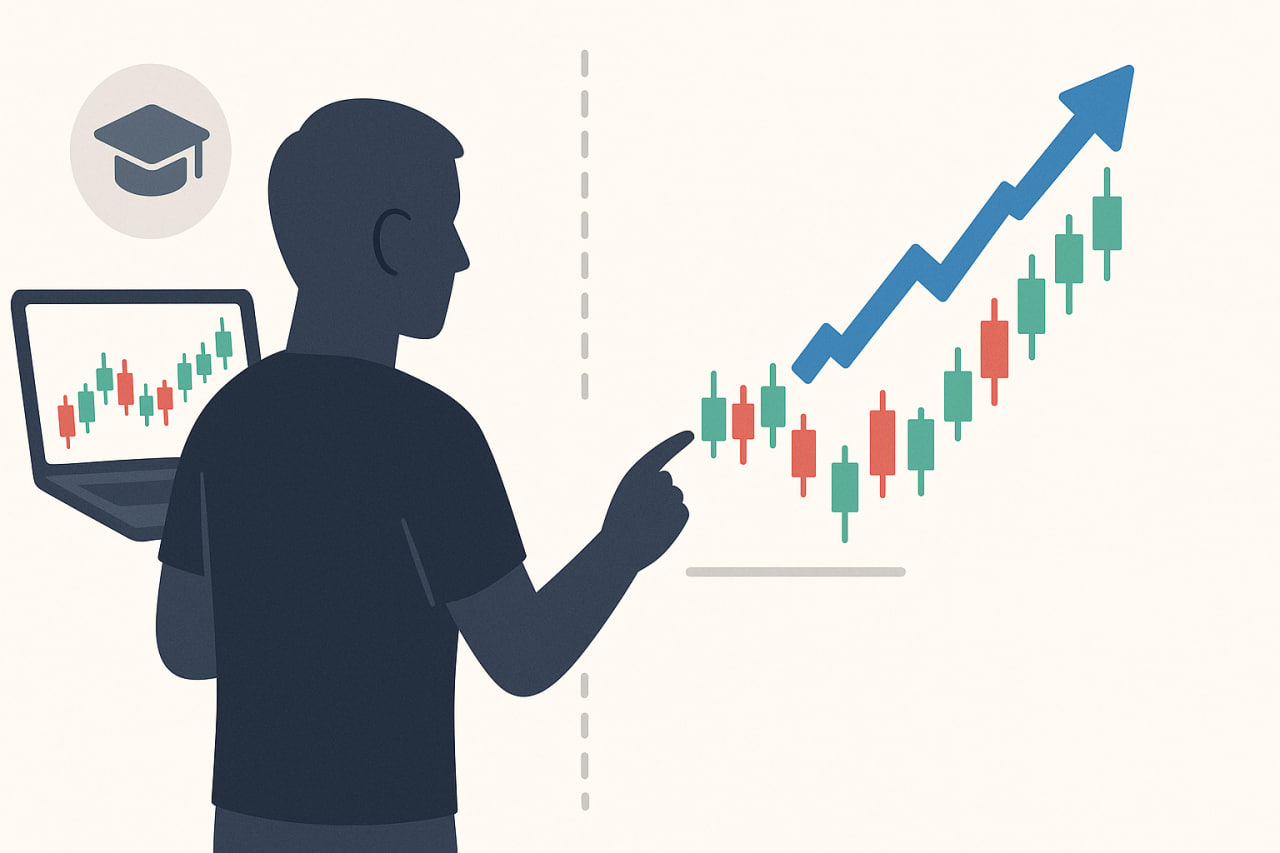Do Crypto Trading Simulators Prepare You for the Market?

Contents
- Introduction
- What is a Cryptocurrency Trading Simulator
- Advantages of Trading Simulators
- Limitations and Drawbacks of Simulators
- The Role of Simulators in Preparing for Real Trading
- Practical Recommendations for Beginners
- Conclusion
Introduction
Cryptocurrency trading simulators have gained noticeable popularity among beginner investors and traders. They help users get acquainted with the market environment and test ideas without risking capital.
This format makes it possible to master the exchange interface, try basic strategies, and understand how charts work. At the same time, a practical question remains: how valuable will the experience on a demo account be in real trading, where speed of decision-making and psychological resilience are crucial?
This article explores the possibilities and limitations of simulators, as well as the approach to using them as a preparatory tool.
What is a Cryptocurrency Trading Simulator

A cryptocurrency trading simulator is a platform that simulates real market behaviour and provides the user with virtual funds. In such an environment, one can open and close positions under conditions close to exchange trading, study order types, and learn settlement procedures. The purpose of the tool is to provide a safe environment for practice and hypothesis testing before moving to a live account.
Main types of simulators:
-
Exchange demo account. Large platforms allow users to open a separate account and trade without real money involvement.
-
Standalone applications. Specialised services with extended settings and modelling of market conditions.
-
Educational platforms. Training tools with tips and thematic lessons for mastering basic techniques.
The main task of all these formats is to provide an accessible environment for learning and practising actions that can then be transferred into real trading.
How Demo Trading Works
The user receives a virtual deposit and manages it in real-time. Trades reflect market movements, but calculations are made without actual debiting of funds. This approach allows one to focus on the logic of entries and exits, order setup, and analysis of each operation’s result.
What can be practised in demo mode:
-
Navigation of the platform interface and working with orders.
-
Strategy testing without capital risk.
-
Trade analysis and maintaining basic statistics.
-
Calculating position size and risk/reward ratios in typical scenarios.
Demo mode helps establish a working process: trade planning, setting risk limits, and evaluating results at the end of a session.
Advantages of Trading Simulators

Simulators are convenient at the preparatory stage: they lower the entry barrier and make it possible to practice decision-making in a calm environment. This is especially useful at the beginning, when repeatable actions and gradual familiarisation with tools are essential.
Advantage | What the trader gets | Practical value |
Safe practice | Practice trades without losing capital | Learning experience without the pressure of fear |
Studying trading platforms | Understanding interfaces, orders, and charts | Confidence when moving to a live account |
Strategy testing | Comparing approaches on historical and live data | Selecting working ideas before using real money |
Risk management training | Setting stop orders and position sizes | Developing discipline and controlling drawdowns |
Confidence building | Getting used to market dynamics | Reducing stress in the first weeks of real trading |
Such preparation accelerates the mastering of basic skills and helps avoid technical mistakes at the start.
Limitations and Drawbacks of Simulators

Despite their apparent advantages, trading simulators cannot fully replicate the market environment. They are suitable for learning and testing ideas, but real trading involves additional factors that are absent in training tools. Among these are psychological pressure, order execution specifics, and technical failures. Therefore, demo mode should be viewed as a preparatory stage rather than a full-fledged replacement for real practice.
Psychological Factor and Emotions
The main difference between virtual trading and working with real funds lies in the emotional component. When the deposit is only conditional, decisions are made more calmly: the trader does not feel the risk of losses and does not face the pressure of uncertainty. On a live account, behaviour changes — fear of losses appears, along with the desire to lock in profits faster and the tendency to violate one’s strategy. These aspects cannot be recreated in a simulator, and they often become decisive for the outcome.
Liquidity and Order Execution
The virtual environment works in a simplified way: orders are executed instantly and at the expected price. However, in the real market, liquidity plays a significant role, as evidenced by the volume of orders and the number of participants. If liquidity is low, trades may close at a worse level than planned. In reality, slippage, delays, and partial order execution are possible. These factors complicate trading and create additional risks that simulators do not account for.
The Role of Simulators in Preparing for Real Trading

Simulators are helpful as a training ground: they provide an opportunity to master the exchange interface, test strategies, and practice basic capital management skills. However, they form only part of the competencies. Working with emotions and adapting to market risks is possible only when using real funds.
That is why, after the first steps, it is helpful to record results already on real accounts: to see how profitability, drawdowns, and other indicators change over time. This approach makes it possible to analyse one’s actions objectively and not rely solely on impressions. Tools that provide transparency of trading results allow traders to track statistics in real time and gain insight into their strengths and weaknesses. Accurate statistics help turn trading from a chaotic process into systematic work.
Practical Recommendations for Beginners
For a simulator to truly help in learning, it is essential to use it systematically. It is effective as a training tool if approached with discipline and with proper recording of experience gained.
Recommendations:
-
Formulate goals for each session. For example, practising a specific order type or testing a particular strategy.
-
Keep a trading journal. Records help track results, analyse decision-making logic, and identify mistakes.
-
Train risk management. Even a virtual deposit is helpful to allocate according to rules: fix position size, place stop-losses, and account for the risk/reward ratio.
-
Gradually move to real funds. After several weeks of working with a demo account, you can open a small live account. This step helps to feel the psychological factor and learn to manage emotions without significant risk.
The combination of a simulator and a small amount of real practice makes the learning process more complete: theory is reinforced with experience, and skills turn into confident actions.
Conclusion
Cryptocurrency trading simulators are a valuable tool for the first steps in the market. They help to master the interface, consolidate basic strategies, and develop discipline without risking capital. However, their capabilities are limited: the emotional side and the influence of liquidity remain outside the training environment.
Thus, simulators should be used as part of the educational process. For most beginners, it becomes a convenient starting point. Still, a full-fledged experience is formed only in real conditions, where both emotional management and the ability to adapt to market situations are essential.